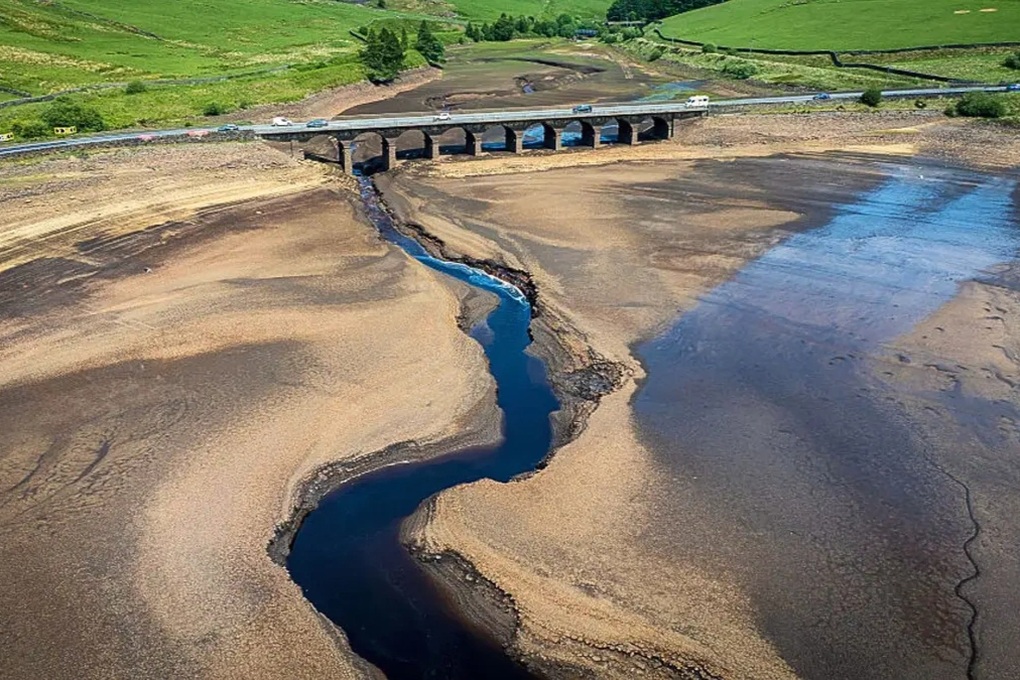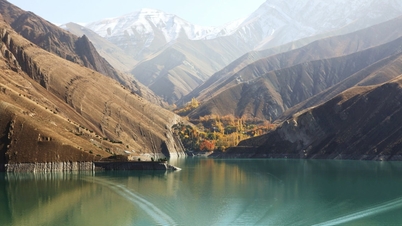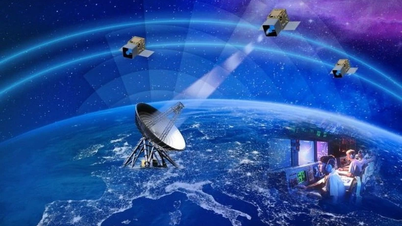In the face of the worst drought in decades, the British government has made a surprising but meaningful call: for people to delete unused emails, photos and digital files.
The reason behind this call is that storing “invisible” data is consuming millions of liters of water every year to cool giant data centers.
When "invisible" data consumes "visible" water
According to a report by Interesting Engineering , the UK Environment Agency has officially declared drought in five regions, including Yorkshire, West Midlands and Greater Manchester, while six other regions are experiencing prolonged dry weather.
The six months to July were the driest since 1976, and August recorded the fourth hottest month of the summer.

Britain is experiencing a severe drought (Photo: Getty).
“Everyday choices like turning off taps when not in use or deleting old emails really help reduce pressure on water demand, helping to protect the health of our rivers and ecosystems,” said Helen Wakeham, Director of Water at the Environment Agency.
The message has shown initial success, with water demand in the Severn Trent area falling by 20% just days after the public appeal in July.
Why does data storage consume water?
When users send emails or save photos to the cloud, that data is processed and stored in data centers. These facilities contain thousands of servers that run continuously, generating large amounts of heat and requiring specialized cooling systems that consume huge amounts of water.

When users send emails or save photos to the “cloud”, data is processed and stored in data centers (Photo: Getty).
According to the University of Oxford's Department of Engineering and Science , a 1MW data center (powering around 1,000 homes) can use up to 26 million liters of water per year for traditional cooling alone.
Additionally, generating electricity to run servers also increases the "water footprint" as thermal and nuclear power plants need water for cooling and steam generation.
Many major technology corporations are actively researching solutions to reduce water consumption.
Microsoft once experimented with placing data centers on the seabed and using liquid cooling technology.
Meta has implemented a StatePoint Liquid Cooling (SPLC) system that uses membrane filtration to reduce water evaporation.
Google is committed to being "water positive" by 2030, meaning it returns more water to the environment than it consumes, and has been using recycled wastewater for cooling at its facility in Douglas County, Georgia (USA).
Some countries also take advantage of local resources: Toronto (Canada) uses the Deep Lake Water Cooling system, which draws cold water from the bottom of Lake Ontario to cool servers.
Meanwhile, Sweden, Denmark, and Finland reuse waste heat from data centers to heat homes, instead of releasing it into the environment.
Raising environmental awareness on digital infrastructure
While the UK Environment Agency did not give a specific figure for how much water could be saved if people collectively "cleaned up" their data, the call underscores growing awareness of the environmental impact of digital infrastructure.
Large-scale changes from business and policy remain key, but individual action is still seen as an important piece of the bigger picture.
A single leaky toilet can waste 200–400 liters of water a day, enough for 2–4 people. When millions of small actions are added together, the positive impact is significant.
“Small steps can be powerful when millions of people do them together, including clearing mailboxes to keep the river flowing,” concluded Ms Wakeham.
Source: https://dantri.com.vn/khoa-hoc/vi-sao-anh-keu-goi-nguoi-dan-xoa-email-cu-anh-thua-de-chong-han-han-20250815084755898.htm













































































































Comment (0)